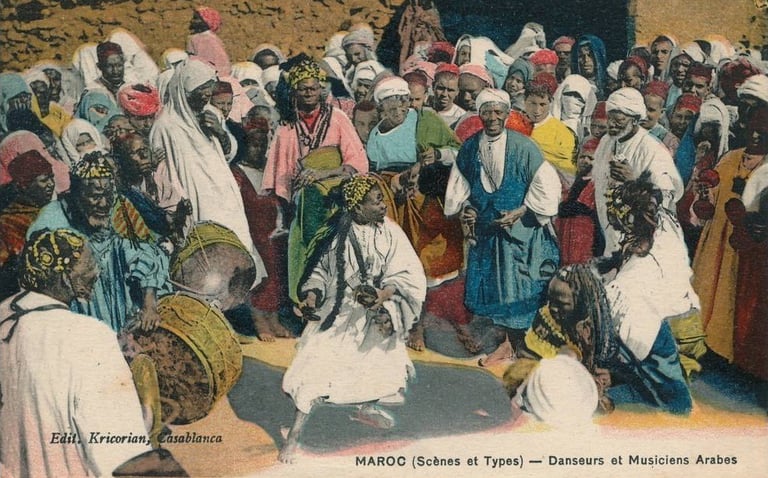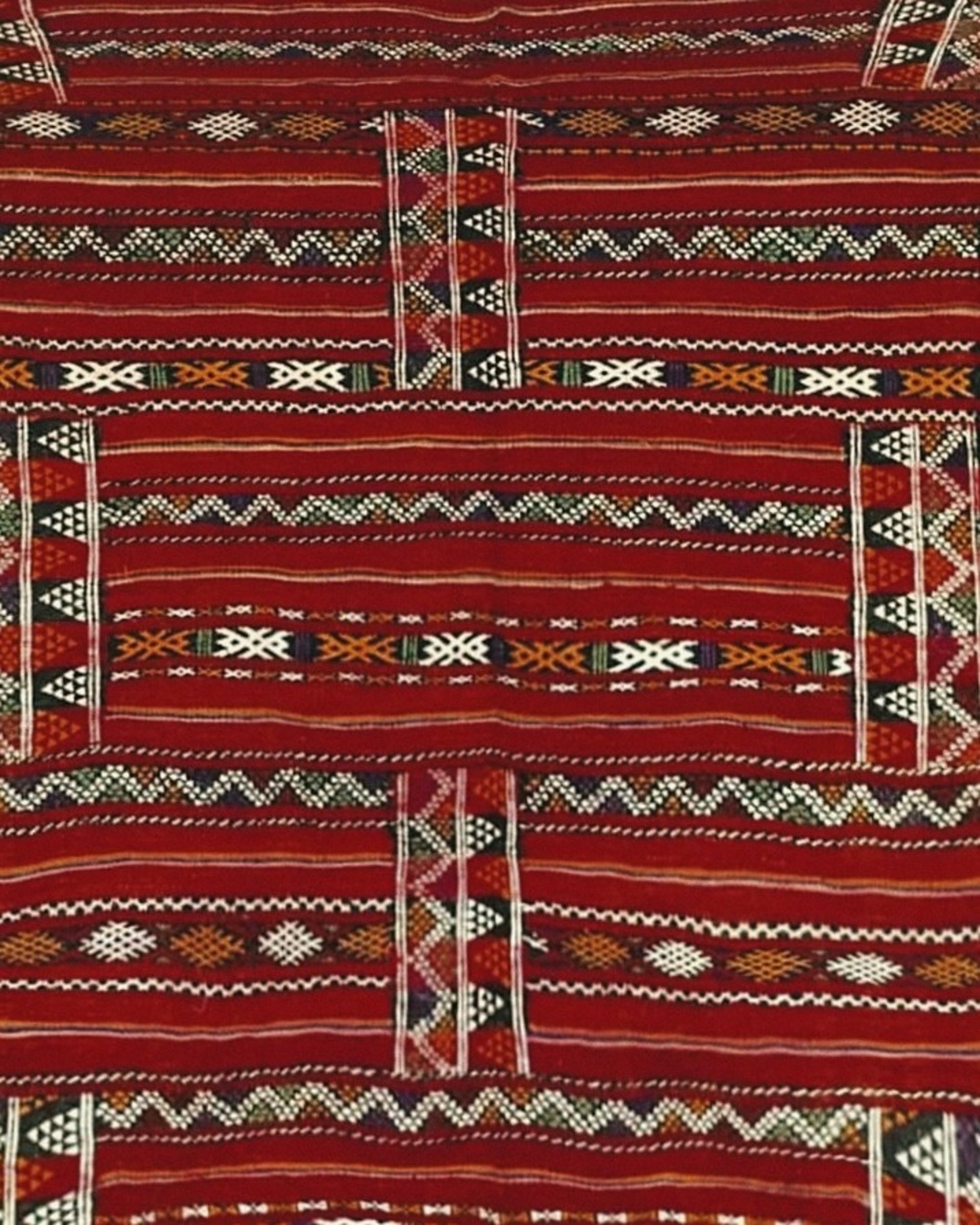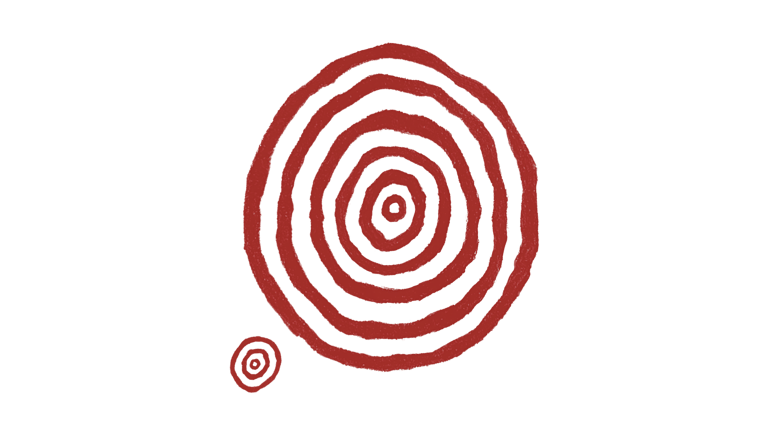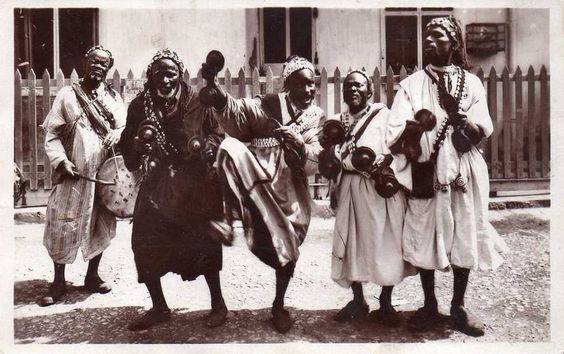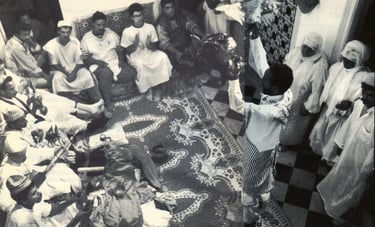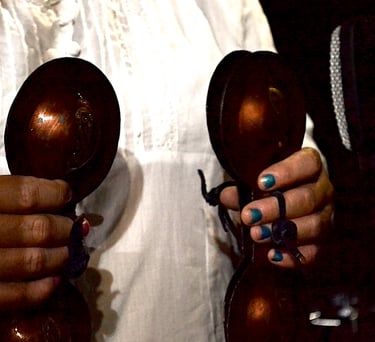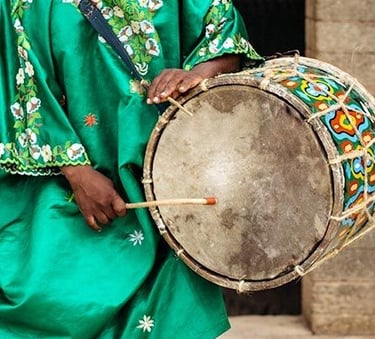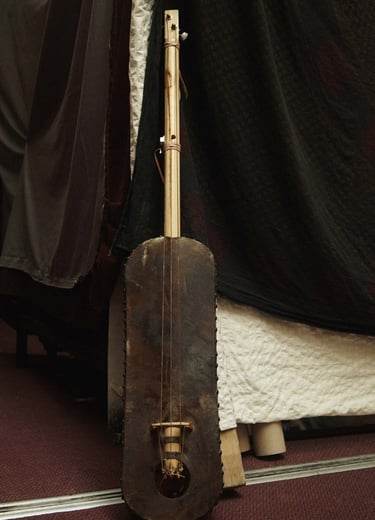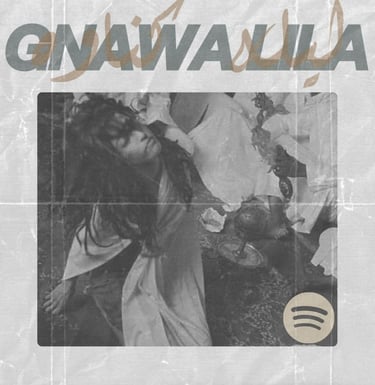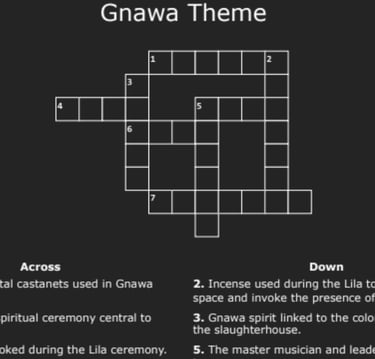Before becoming a musical and spiritual phenomenon, the Gnawa people first arrived in North Africa from sub-Saharan Africa in the 11th century, brought through the trans-Saharan trade routes to be sold as slaves in the Mediterranean or to serve as soldiers. Under the reign of Moulay Ismail in the 16th century, all the trafficked people were ordered to enroll in the army, free or enslaved. This was followed by many more centuries of struggles for freedom spanning until the 19th century when slavery was abolished after pressures from European powers. Although the practices persisted in some areas, Chants of freedom began to echo as Gnawa began constructing their community and identity telling their story of enslavement and praising their spiritual practices, leaving behind a beloved, rich, and living sound to be shared and cherished today.
Gnawa art evolved over the centuries, rooted in spirituality, cultural traditions, and healing. It blends dance and chants but it has music at heart. The full experience is only complete during the Lila, where the Gnawi spirits are finally fully expressed. The Lila is the central expression of Gnawa, it reflects on their identity, heritage, and history. This Lila is led by "Lmaalem," the musician master, amongst his troupe members and often a soothsayer, “Chowafa” or “Mouqadima,” present to guide participants during "L’hadra" or "L’hal" which is a state of trance.
Before initiating Lila, the Maalem and his group parade through the alleys, streets, and squares announcing the commencement of a Lila. All are wearing embellished hats “Taqyat” and colored tunics “Fouqyat” chanting for multiple saints to the rhythms of “Qraqeb”a and “Tbal”b, while Lmaalam singularly dances until the “Kouyou” period, which is the time of the ceremony. This phase is called “L'Aada” meaning the habit. It aims to gather the people that need a reconnection with the spiritual world, referred to as "Ashab l'hal."
a Qraqeb: an idiophonic instrument that resembles a castanet.
b Tbal / Ganga: a double headed membranophone, played with two drumsticks, one curved and the other straight.
The Lila spans from dusk til dawn and it often takes place at a traditional House or a Riad. The “Lmouqadima” organizes the space using her spiritual powers to clean the space from energies with candles, herbs, and mumbling recitations on the tip of her tongue. Once the ritual area is ready with sitting arrangements for “Lmaalam” in the middle, his “Mtaalmine” beside him, and Lmouqadima / Chouwafa in front of them dressed in white.
Accompanied by spiritual chants, a plate called “Tbaq” is placed in front of Lmaalam transforming the area into a sacred space. The plate contains various incenses “Bukhour” such as Alum (Cheba), (Harmala) Harmal, and Oud, as well as fabrics and candles of multiple colors. The colors symbolize each of the spirits “Mluk.” This stage is crucial as it unlocks the realm of spirits inviting the “Mluk” to be amongst the people, and officially signals the doors are open for them.
The Lila ceremony only officially begins when a unique and powerful recitation of Al-Fatiha is delivered by Lmaalem with a resonant voice and timbre pitch that sends chills to the present people. This invokes a strong presence and sets the tone for the night ahead.
Lguembri : also known as sentir, and elhajhouj in Hausa. A guitar-like instrument covered with camel skin, and consists of three strings made of a goat’s intestines.
“Lguembri” or “Lhajhouj” is the central instrument of Lila and is played by Lmaalem”. The shift From just “Qraqeb” and “Tbal” to Lguembri signifies a switch from the public aspect to the ceremonial and sacred expression as it is exclusive for Lila. Once Lguembri is tuned, the Brazier “Lmajmar” is well-lit, and the air is full of incenses. The Gnawa troupe collectively takes off with a dance “Jadba” on the rhythm of Lguembri and Qraqeb. The dance is characterized by jumps and head-turns that dangle the tassels “Chachyat” attached to their caps going harmoniously with the music.
History: Rhythms of The Enslaved Free.
Lila
Lila preparations / L'Aada
The beginning of Lila / Jadba / Ftouh Rahba
Jadba
Mluk
Throughout the night, 7 colors are spread on the spiritual energies. While some are shared by multiple spirits, this repetition occurs on different levels or modes and in different rituals. During each spirit, a different plate "Tbaq"1 is presented with the right color and the right requirements, be it food, water, or any other needed objects accordingly. The Gnawa troupe also dresses in the appropriate color for each phase.
The color phases:
White: a color that symbolizes the day and life embodying spiritual cleansing, purity, and honesty. It reflects Tagnawit’s inner healing aspect and mysticism. This color is placed firstly during Al-Fatiha, and later for “Achourafa” like sidi Lfqih and sidi brahim. This phase is calm fueled with mediative music showcasing the Sufi heritage of Gnawa as well as their peaceful essence.
Black: a symbol of the afterlife, the night, and the ancestors. Black is associated with Baba Mimoun ana Lala Mimouna. They are said to be complex, composite beings, involving a resemblance to Adam and Eve portraying the mother, father, and ancestors of the Gnawa people. The music becomes deeper and the atmosphere becomes majestic and courtly, almost asking for salvation.
Lala Aicha/ Lmima or the mother is also associated with the color black in a different connotation. The color here symbolizes loss, sorrow, and melancholy. Lala Aicha holds the tale of a spirit whose husband was killed. She cries for him every day and seeks revenge every night. Her phase has one of the saddest chants and specific requirements as the lights must be out, unsalted olives and dried figs should be passed around and cries fill the room expressing the agony leaving the soul.
Blue - Lbahryine: the color of protection, wisdom, and recovery. Blue is primarily connected to Sidi Moussa of water and cleansing, which is mirrored by the fluid music, creating a purifying and serene waterlike atmosphere. During this phase a member of the Gnawa troupe places a bowl of water on top of his head, proceeding to dance and jump without it falling or spilling. "Chouwafa"2 gets her turn on this dance, proving her worthiness of the status.
Red – Lhomr or Lgzara: symbolizing blood, fire, and power, the red color is the most intense moment of Lila. It is associated with Bacha Hamou and Hammouda, the kings of the slaughterhouse and the blood shedders. As a requirement, a knife that was used to slay a sacrificed cattle must be placed on their plate. The fast-paced and powerful music during these spirits drives the people who are connected to them to a half-conscious trance that involves knives and blood. The scene might get gruesome, participants in this state often hurt themselves offering their own blood as sacrifice.
Green - Lbouhala: It is the color of the earth, growth, and renewal. On this level, many jungle spirits like Kounya, Ingouba, and Lbouhali are called by soothing and earthy music, inviting for a connection with nature and the ancestors, as well as praying for fertility and new beginnings.
Yellow - dangerous laughter: a color that symbolizes the sun, energy, and joyfulness. Associated with Lala Mira, a female spirit that is full of laughter and playfulness on one hand, and envy and jealousy on the other. The intense music fluctuates between high and low pitches stressing the polarity of life. Hysterical laughter can be heard at this level, and people who lose consciousness during it are believed to have caught the evil eye.
Purple: the color of femininity, royalty, and mystery. Purple is connected with Lala Malika, a female spirit that embodies femininity and delicacy. Her chants transform the atmosphere to an energetic and light ambiance as both men and women dance cheerfully to the rhythms of Lala Malika, creating a collective quality.
The Lila is more than just a ritual, it is a living experience where art meets spirituality for a connection with Gnawa’s history, ancestors, and cultural identity. The effects of Lila linger for days if not months, affirming the experience to be a communal and personal renewal and strengthening the bonds between the physical and spiritual worlds.
Tagnawit developed over the centuries to hold a rich part in Morocco’s culture. It blends the powerful African roots with the vibrant Amazigh influences and spiritual Sufi healing, creating a profound artistic expression that’s celebrated locally in traditional settings, and globally in Music festivals. The rhythms of Gnawa continue to resonate with new generations proving its vitality and strong spirituality.
Lila Aftermath
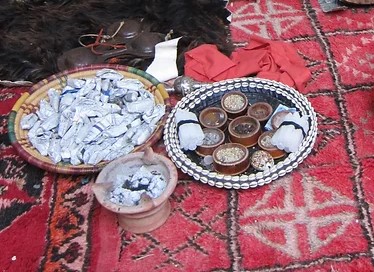

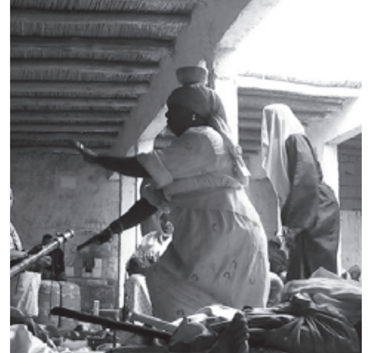

1) Tbaq - Plate
2) Mouqaima dancing with Bowl of water to Sidi Mussa
